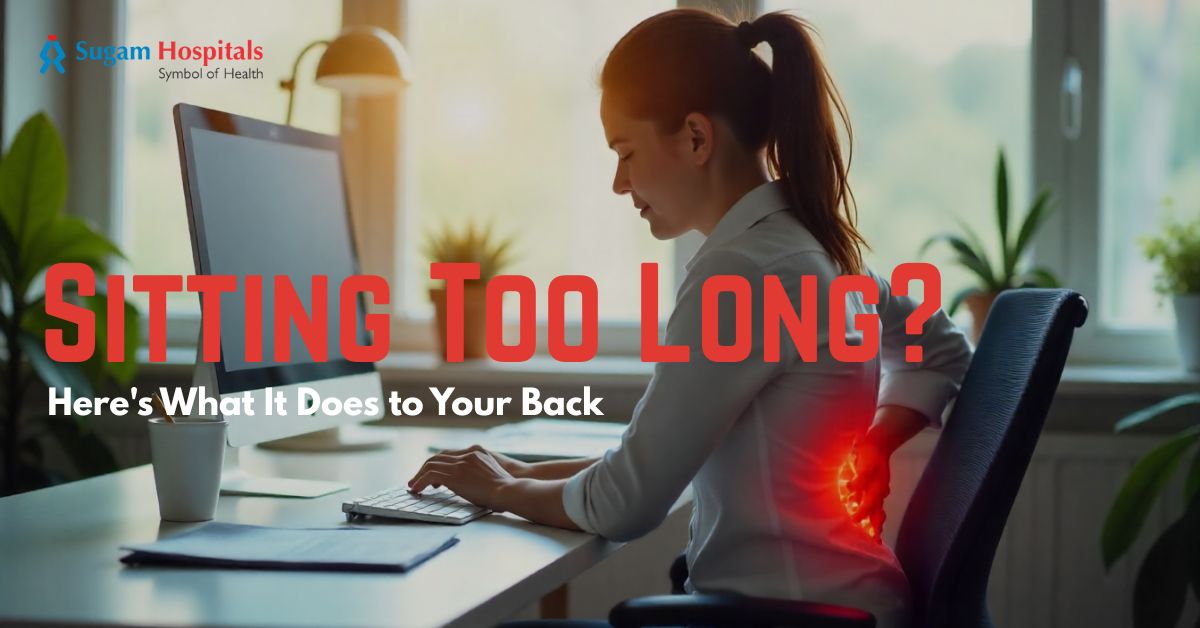Sitting Too Long? Here’s What It Does to Your Back

Sitting Too Long? Here’s What It Does to Your Back
September 14, 2025 by adminToday’s modern life tends to put us in sitting positions for long periods of time, whether at a desk, in a car or relaxing at home. What starts out as an innocent position can subtly stress our backs and spine, especially when we never get a chance to realign by standing or transferring weight.
This sitting routine can turn into discomfort. Discomfort often leads to stiffness and chronic pain.
In this blog, we will get to know how sitting affects your back and can allow you to take simple steps toward preserving posture and your spine for the long haul.
The Strain on Your Spine
Your body was built to move, not to sit in one position for hours at a time. As you sit, the spine loses its natural curve and the pressure increases at the lower back. The uneven pressure distributes body weight onto the spinal discs, which serves as the cushioning in between your spine pieces. This prolonged stress eventually places pressure on the nerves that run through your spine and people who sit in one position for long hours often report they felt a sense of numbness, tingling or the onset of shooting pains in the legs.
These are signs that your spinal nerves are under pressure. Over time the pressure you place on the nerves may develop into a chronic issue that reverses mobility. Conditions, such as sciatica, evolve when the pressure on the nerves persists and decreases quality of life.
Muscles Become Weaker Over Time
Another consequence of sitting too long is muscle deconditioning. Core and back muscles are responsible for supporting our posture, but when they sit idle for hours, they undergo a slow weakening process. Weak muscles cannot stabilize the spine correctly. Weak and unstable spines are closer to being injured. This is one reason we feel sore or stiff when we stand up after a longer sitting period.
Decreased Blood Circulation and Joint Stiffness
Sitting for extended periods of time decreases blood flow to the muscles and spine. The end result is decreased circulation which means the tissues are not getting the oxygen and nutrients they require to stay healthy.
Notably, as circulation decreases the joints in the hips and lower back experience less range of motion (aka stiffness). This stiffness can make simple motions like bending or stretching uncomfortable, but if left untreated can contribute to chronic back pain, over the months and years!
The Posture Problem
Posture can make a huge difference in how sitting affects the back. Leaning forward toward a screen or slouching in a chair moves the body’s center out of alignment. This posture creates extra stress on the spine as well as stress on the neck and shoulders. This position eventually may become a habit that is so readily assumed that it is ignored and may even leave lasting structural demands.
Can Sitting Too Long Cause Long-Term Damage?
Poor posture and stagnant movement has been known to lead to chronic pain conditions like herniated discs, sciatica and degenerative disc disease. This does not mean that every person sitting for long periods will experience these problems, however, it is fair to say the risks multiply if remedial action is not implemented. This is why awareness and making functional lifestyle changes are so important for preventing chronic pain.
Protecting Your Back from the Effects of Sitting
While it’s true that we cannot totally eliminate the act of sitting, we do have strategies for reducing the negative consequences of this activity:
- Regular breaks – When working in a sitting position, standing and stretching at least once every 30-45 minutes can ease the loading on the spine.
- Supportive seating – Would you purchase shoes that did not support the natural shape of your foot? Would you expect the same level of enjoyment while walking that you normally have? Using a chair that supports your spine’s natural curve will help maintain a more comfortable seated position.
- Strengthening exercises – Creating a strong and stable core and back helps your spine to stabilize.
- Mindful postural awareness – Simply being aware of how you maintain your sitting posture can reduce your tendency to slouch or lean more than you need to.
These are just some of the simple steps we can practice habitually to minimize long-term loading on the back.
Back pain associated with long periods of sitting is on the rise, but it doesn’t have to be an unavoidable part of modern life. Once you begin to understand the stress long sitting puts on the spine, you can take steps to protect your back.
At Sugam Hospital, we see the effects of a sedentary lifestyle every day and our specialists work with every patient to restore mobility and alleviate pain. For those in search of quality return to sport or care from a trusted Orthopedic Doctor Chennai, our experienced team of specialists will provide quality guidance and treatment to keep your spine healthy.

